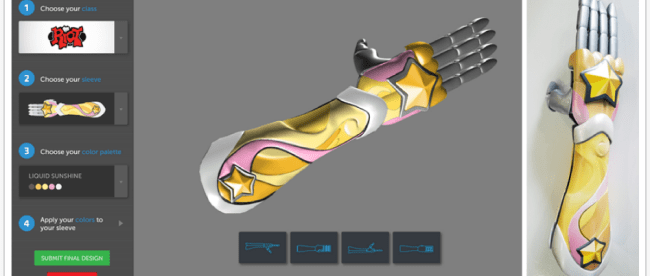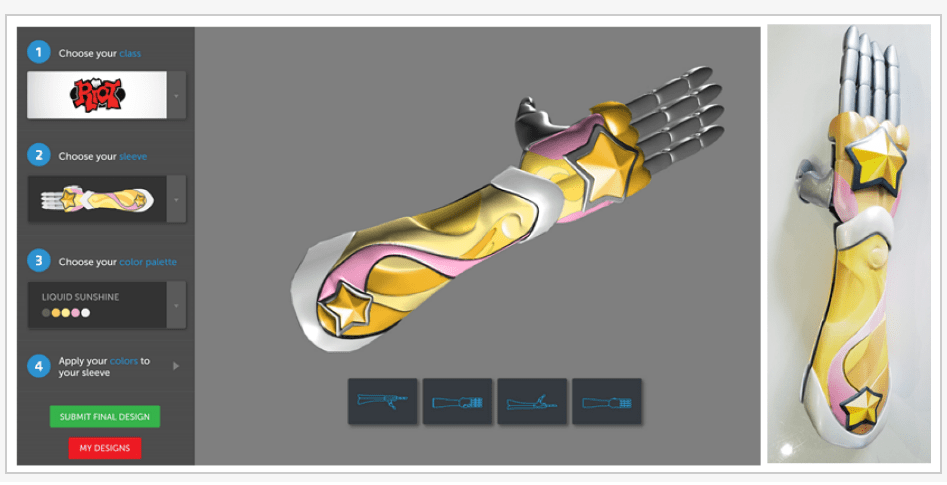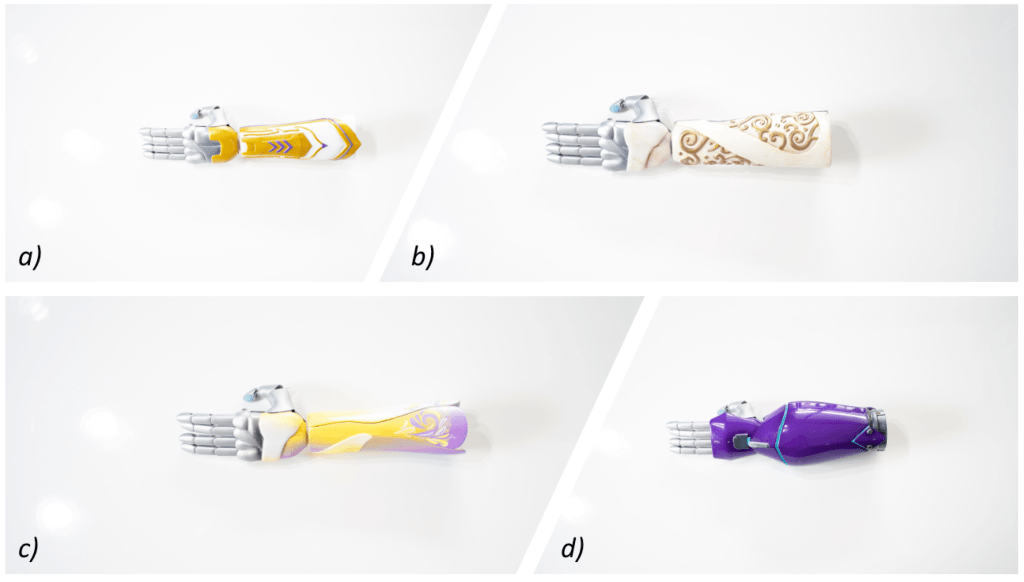 A sample interactive website where children can customize interchangeable sleeves for their prosthetic limbs
A sample interactive website where children can customize interchangeable sleeves for their prosthetic limbsThanks to 3D printing, prosthetic limbs have become extremely affordable for a lot of amputees. Even then, the use of prosthetic limbs, especially in children, is fairly limited. In order to understand what it would take to accelerate the transformation provided by 3D printed limbs, researchers at University of Central Florida and Oregon Health and Science University are focusing on various problems that still need to be tackled when it comes to prosthetics, especially through clinical trials and the ever growing maker community.
To overcome all these hurdles, many makers are working with designers to make very appealing limbs that fit into the overall personality of the user. Not only that, several makers and designers work directly with children to give them the exact design they need. This increases user engagement, ultimately encouraging them to be positive towards their prosthetic limb. In some cases, researchers and designers have also been working on “Interchangeable sleeves” that can make prosthetic limbs even more appealing.These sleeves can be easily customized to a website by providing various styles, colors, and effects with the ability to compare, select and personalize. Providing great design and visual appeal is a great step towards making a child to accept their own prosthetic leg. To make them even more comfortable, a research team has also created a Mario style video game that initiates superpowers, attacks and defenses based on how our child contracting muscles. This fun video game provides significant training through simulation and teaches various complex multigesture hand states.
 A sample interactive website where children can customize interchangeable sleeves for their prosthetic limbs
A sample interactive website where children can customize interchangeable sleeves for their prosthetic limbs  3D-printed limbs with interchangeable artistic covers from Limbitless Solutions at the University of Central Florida. (a) Warrior class, (b) Ethereal class, (c) Serenity class, and (d) Shadow class.
3D-printed limbs with interchangeable artistic covers from Limbitless Solutions at the University of Central Florida. (a) Warrior class, (b) Ethereal class, (c) Serenity class, and (d) Shadow class.
What it comes down to is not just providing functionality but also doing what it takes to make prosthetic limbs more acceptable for children. To learn more details about what researchers are doing to make prosthetic limbs more acceptable, hit the source links, especially the research article.
Source: MDPI via 3Dprint.com
Related
** This post was originally published on https://assistivetechnologyblog.com/2019/06/appealing-design-prosthetic-limbs.html

